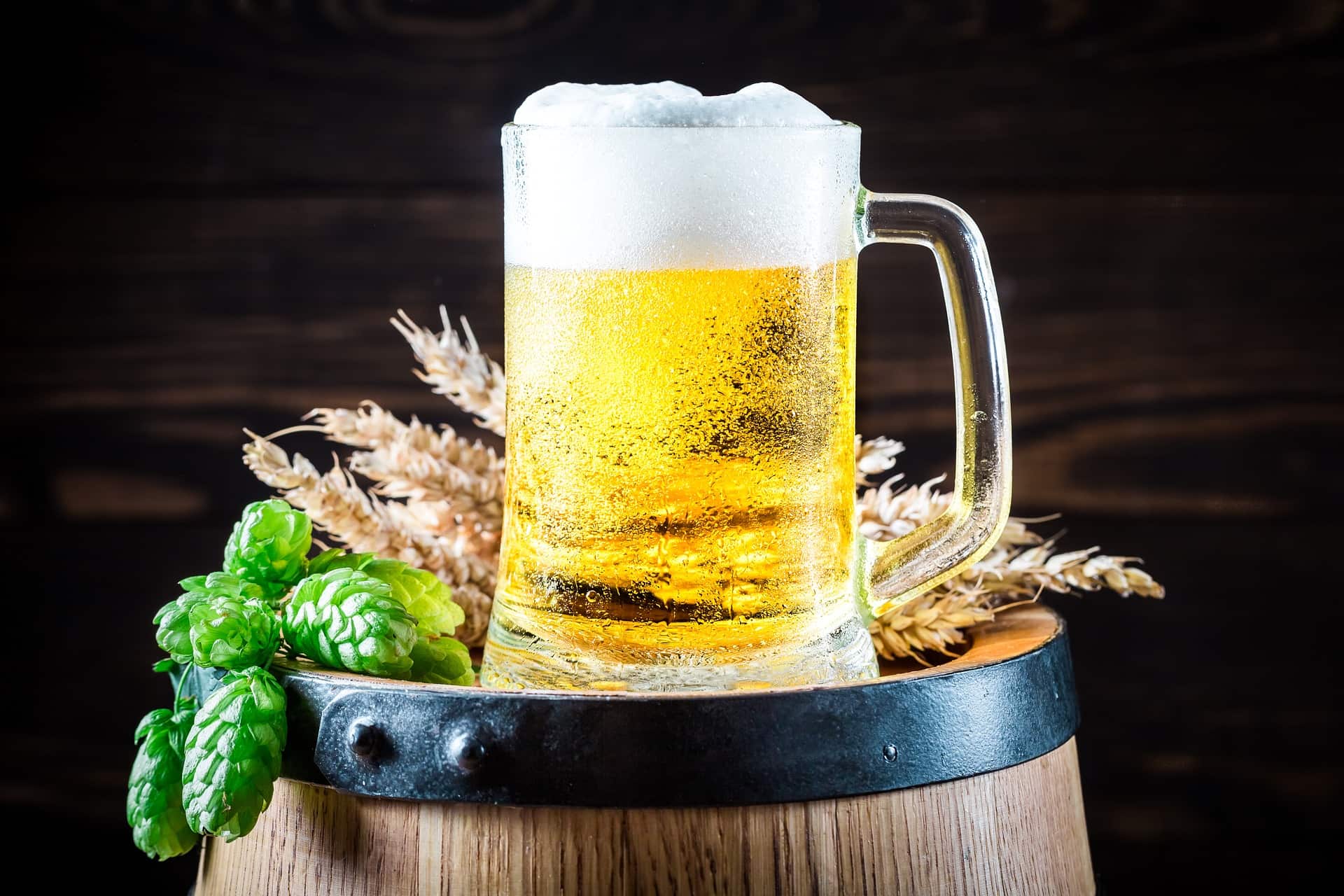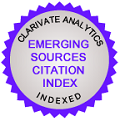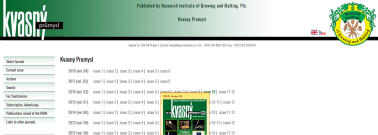Production and characterisation of non-alcoholic beer using special yeast
DOI:
https://doi.org/10.18832/kp2019.66.336Keywords:
low-alcoholic beer, non-alcoholic beer, non-Saccharomyces yeast, hybrid yeastAbstract
Non-Saccharomyces yeast strains Saccharomycodes ludwigii, Schizosaccharomyces pombe, Lachancea fermentati and Pichia angusta together with a hybrid yeast strain cross-bred between genetically modified Saccharomyces cerevisiae W303-1A G418R and Saccharomyces eubayanus as well as the parent yeasts of the hybrid were studied for potential use for non-alcoholic beer production. The hybrid yeast, its Saccharomyces cerevisiae W303-1A G418R parent and Saccharomycodes ludwigii were not able to metabolise maltose during Durham tube tests. Schizosaccharomyces pombe, Lachancea fermentati and Pichia angusta metabolised maltose, however, showed limited ethanol production. Parameters, volatile and non-volatile organic compounds of beers produced by the studied yeast were analysed and compared to a beer produced by bottom fermented brewer’s yeast Saccharomyces pastorianus.
References
Andrés-Iglesias, C., Blanco, C. A., García-Serna, J., Pando, V., & Montero, O. (2016). Volatile Compound Profiling in Commercial Lager Regular Beers and Derived Alcohol-Free Beers After Dealcoholization by Vacuum Distillation. Food Analytical Methods, 9, 3230–3241. https://doi.org/10.1007/s12161-016-0513-7
Baker Brachmann, C., Davies, A., Cost, J. G., Caputo, E., Li, J., Hieter, P., & Boeke, D. J. (1998). Designer Deletion Strains derived from Saccharomyces cerevisiae S288C: a Useful set of Strains and Plasmids for PCR-mediated Gene Disruption and Other Applications. Yeast, 14, 115–132. https://doi.org/10.1002/(SICI)1097-0061(19980130)14:2<115::AID-YEA204>3.0.CO;2-2
Becker, H., & Gerhäuser, C. (2008). Phenolic compounds in beer. In: Beer in Health and Disease Prevention, (ed. Preedy, R. V.), Academic Press, ISBN: 978-0-12-373891-2
Bellut, K., Krogerus, K. & Arendt, K. E. (2020). Lachancea fermentati Strains Isolated From Kombucha: Fundamental Insights, and Practical Application in Low Alcohol Beer Brewing. Frontiers in Microbiology, 11, 764. https://doi.org/10.3389/fmicb.2020.00764
Bellut, K., Michel, M., Zarnkow, M., Hutzler, M., Jacob, F., Atzler, J. J., Hoehnel, A., Lynch, K. M., & Arendt, E. K. (2019). Screening and Application of Cyberlindnera Yeasts to Produce a Fruity, Non-Alcoholic Beer. Fermentation, 5(4), 103. https://doi.org/10.3390/fermentation5040103
Bellut, K., Michel, M., Zarnkow, M., Hutzler, M., Jacob, F., De Schutter, P. D., Daenen, L., Lynch, M. K., Zannini, E., & Arendt, K. E. (2018). Application of Non-Saccharomyces Yeasts Isolated from Kombucha in the Production of Alcohol-Free Beer. Fermentation, 4(3), 66. https://doi.org/10.3390/fermentation4030066
Benito, Á., Calderón, F., & Benito, B. (2019). Schizosaccharomyces pombe and Lachancea thermotolerans: Joint Use as an Alternative to the Traditional Fermentations by Saccharomyces cerevisiae and Oenococcus oeni in Oenology. In: Alcoholic Beverages (eds. Grumezescu, A. G., Holban, A. M.), Elsevier Inc, 387–417. https://doi.org/10.1016/B978-0-12-815269-0.00012-X
Brányik, T., Silva, D. P., Baszczyňski, M., Lehnert, R., & Almeida e Silva, J. B. (2012). A review of methods of low alcohol and alcohol-free beer production. Journal of Food Engineering, 108(4), 493–506. https://doi.org/10.1016/j.jfoodeng.2011.09.020
Briggs, D. E., Boulton, C. A., Brookes P. A., & Stevens, R. (2004). Brewing Science and Practice. Woodhead Publishing Limited and CRC Press LLC, 1–881. ISBN 978-1-85573-490-6
Buiatti, S. (2009). Beer Composition: An Overview. In: Beer in Health and Disease Prevention, (ed. Preedy, R. V.), Academic Press, 213-225. https://doi.org/10.1016/B978-0-12-373891-2.00020-1
Canonico, L., Agarbati, A., Comitini, F., & Ciani, M. (2016). Torulaspora delbrueckii in the brewing process: A new approach to enhance bioflavour and to reduce ethanol content. Food Microbiology, 56(6), 45–51. https://doi.org/10.1016/j.fm.2015.12.005
Catarino, M., & Mendes, A. (2011). Non-alcoholic beer–A new industrial process. Separation and Purification Technology, 79(3), 342–351. https://doi.org/10.1016/j.seppur.2011.03.020
Clapperton, F. J., & Brown, W. G. D. (1978). Caprylic Flavour As a Feature of Beer Flavour. Journal of The Institute of Brewing, 84(2), 90–92. https://doi.org/10.1002/j.2050-0416.1978.tb03844.x
Contreras-Calderón, J., Guerra-Hernández, E., & García-Villanova, B. (2008). Indicators of non-enzymatic browning in the evaluation of heat damage of ingredient proteins used in manufactured infant formulas. European Food Research and Technology, 227, 117–124. https://doi.org/10.1007/s00217-007-0700-2
De Francesco, G., Sannino, C., Sileoni, V., Marconi, O., Filippucci, S., Tasselli, G., & Turchetti, B. (2018). Mrakia gelida in brewing process: An innovative production of low alcohol beer using a psychrophilic yeast strain. Journal of Food Microbiology, 76, 354–362. https://doi.org/10.1016/j.fm.2018.06.018
De Francesco, G., Turchetti, B., Sileoni, V., Marconi, O., & Perretti, G. (2015). Screening of new strains of Saccharomycodes ludwigii and Zygosaccharomyces rouxii to produce low-alcohol beer. Journal of The Institute of Brewing and Distilling, 121(9), 113–121. https://doi.org/10.1002/jib.185
Domizio, P., House, F. J., Joseph, L. M. C., Bisson, F. L., & Bamforth, W. C. (2016). Lachancea thermotolerans as an alternative yeast for the production of beer. Journal of The Institute of Brewing, 122(4), 599–604. https://doi.org/10.1002/jib.362
Furdíková, K., Machyňáková, A., Drtilová, T., & Špánik, I. (2020). Comparison of Different Categories of Slovak Tokaj Wines in Terms of Profiles of Volatile Organic Compounds. Molecules, 25(3), 669 https://doi.org/10.3390/molecules25030669
Gernat, D., Brouwer, E., & Ottens, M. (2019). Aldehydes as Wort Off-Flavours in Alcohol-Free Beers—Origin and Control. Food and Bioprocess Technology, 13, 195–216. https://doi.org/10.1007/s11947-019-02374-z
Huerta-Zurita, R., Horsley, D. R., & Schwarz, B. P. (2018). Is the Apparent Degree of Fermentation a Reliable Estimator of Fermentability. Journal of the American Society of Brewing Chemists, 77(1), 1–9. https://doi.org/10.1080/03610470.2018.1553459
Ivanov, K., Petelkov, I., Shopska, V., Denkova, R., Gochev, V., & Kostov, G. (2016). Investigation of mashing regimes for low-alcohol beer production. Journal of The Institute of Brewing, 122(3), 508–516. https://doi.org/10.1002/jib.351
Jiang, Z., Yang, B., Liu, X., Zhang, S., Shan, J., Liu, J. & Wang, X. (2017). A novel approach for the production of a non-alcohol beer (≤0.5% abv) by a combination of limited fermentation and vacuum distillation. Journal of The Institute of Brewing, 123(4), 533–536. https://doi.org/10.1002/jib.465
Kobayashi, M., Shimizu, H., & Shioya, S. (2008). Beer volatile compounds and their application to low-malt beer fermentation. Journal of Bioscience and Bioengineering, 106(4), 317–323. https://doi.org/10.1263/jbb.106.317
Kochláňová, T., Kij, D., Kopecká, J., Kubizniakova, P., & Matoulková, D. (2016a). Non-Saccharomyces Yeasts and Their Importance in the Brewing Industry. Part I –Brettanomyces (Dekkera). Kvasny prumysl, 62(7–8), 198–205. https://doi.org/10.18832/kp2016024
Kochláňová, T., Kij, D., Kopecká, J., Kubizniakova, P., & Matoulková, D. (2016b). Non-Saccharomyces yeasts and their importance in the brewing industry. Part II. Kvasny prumysl, 62(7–8), 206–214. https://doi.org/10.18832/kp2016025
Krogerus, K. & Gibson, B. R. (2013). Influence of valine and other amino acids on total diacetyl and 2,3-pentanedione levels during fermentation of brewer´s wort. Applied Microbiology and Biotechnology, 97, 6919–6930. https://doi.org/10.1007/s00253-013-4955-1
Kurtzman, P. C., Fell, W. J., Boekhout, T., & Robert, V. (2011). Chapter 7 - Methods for Isolation, Phenotypic Characterization and Maintenance of Yeasts. In: The Yeasts (eds. Kurtzman, P. C., Fell, W. J., Boekhout, T.), Elsevier, 87–110. https://doi.org/10.1016/B978-0-444-52149-1.00007-0
Kyselová, L., & Brányik, T. (2015). Quality improvement and fermentation control in beer. In: Advances in Fermented Foods and Beverages (ed. Holzapfel, W.), Woodhead Publishing, 477–500. https://doi.org/10.1016/B978-1-78242-015-6.00020-7
Landaud, S., Latrille, E., & Corrieu, G. (2001). Top Pressure and Temperature Control the Fusel Alcohol/Ester Ratio through Yeast Growth in Beer Fermentation. Journal of The Institute of Brewing, 107(2), 107–117. https://doi.org/10.1002/j.2050-0416.2001.tb00083.x
Liguori, L., De Francesco, G., Russo, P., Perretti, G., Albanese, D. & Di Matteo, M. (2015). Production and characterization of alcohol-free beer by membrane process. Food and Bioproducts Processing, 94(4), 158–168. https://doi.org/10.1016/j.fbp.2015.03.003
Loira, I., Morata, A., Palomero, F., González, C., & Suárez-Lepe A. J. (2018). Schizosaccharomyces pombe: A Promising Biotechnology for Modulating Wine Composition. Fermentation, 4(3), 70. https://doi.org/10.3390/fermentation4030070
McMurrough, I., Madigan, D., Donnelly, D., Hurley, J., Doyle, A. M., Hennigan, G., McNulty, N., & Smyth, R. M. (1996). Control Of Ferulic Acid And 4-Vinyl Guaiacol In Brewing. Journal of The Institute of Brewing, 102(5), 327–332. https://doi.org/10.1002/j.2050-0416.1996.tb00918.x
Michel, M., Meier-Dörnberg, T., Jacob, F., Methner, F. J., Wagner, R. S., & Hutzler, M. (2016). Review: Pure non-Saccharomyces starter cultures for beer fermentation with a focus on secondary metabolites and practical applications. Journal of The Institute of Brewing, 122(11), 569–587. https://doi.org/10.1002/jib.381
Montanari, L., Marconi, O., Mayer, H., & Fantozzi, P. (2009). Production of Alcohol-Free Beer. In: Beer in Health and Disease Prevention (ed. Preedy, R. V.), Academic Press, 61–75. https://doi.org/10.1016/B978-0-12-373891-2.00006-7
Negrută, O., Csutak, O., Stoica, I., Rusu, E., & Vassu, T. (2010). Methylotrophic yeasts: diversity and methanol metabolism. Romanian Biotechnological Letters, 15(4), 5369–5375. https://www.researchgate.net/publication/266016918_Methylotrophic_yeasts_Diversity_and_methanol_metabolism
NIST WebBook Chemie Database [online]. https://webbook.nist.gov/chemistry/ [2020-8-24]
Olšovská, J., Vrzal, T., Štěrba, K., Slabý, M., Kubizniaková, P., & Čejka, P. (2018). The chemical profiling of fatty acids during the brewing process. Journal of the Science of Food and Agriculture, 99(4), 1772–1779. https://doi.org/10.1002/jsfa.9369
Olšovská, J., Čejka, P., Sigler, K. & Hönigová, V. (2014). The Phenomenon of Czech Beer: a review. Czech Journal of Food Sciences, 32(4), 309–319. https://doi.org/10.17221/455/2013-CJFS
Phiarais, P. N. B., Mauch, A., Schehl, D. B., Zarnkow, M., Gastl, M., Herrmann, M., Zannini, E., & Arendt, K. E. (2010). Processing of a Top Fermented Beer Brewed from 100 % Buckwheat Malt with Sensory and Analytical Characterisation. Journal of The Institute of Brewing, 116(3), 265–274. https://doi.org/10.1002/j.2050-0416.2010.tb00430.x
Porter, T. J., Divol, B., & Setati, M. E. (2019). Lachancea yeast species: Origin, biochemical characteristics and oenological significance. Food Research International, 119(5), 378–389. https://doi.org/10.1016/j.foodres.2019.02.003
Riu-Aumatell, M., Miró, P., Serra-Cayuela, A., Buxaderas, S., & López-Tamames, E. (2014). Assessment of the aroma profiles of low-alcohol beers using HS-SPME-GC-MS. Food Research International, 57(3), 196–202. https://doi.org/10.1016/j.foodres.2014.01.016
Saison, D., De Schutter, P. D., Uyttenhove, B., Delvaux, F., & Delvaux, R. F. (2009). Contribution of staling compounds to the aged flavour of lager beer by studying their flavour thresholds. Food Chemistry, 114(4), 1206–1215. https://doi.org/10.1016/j.foodchem.2008.10.078
Senkarcinova, B., Dias, I. A. G., Nešpor, J., & Brányik, T. (2019). Probiotic alcohol-free beer made with Saccharomyces cerevisiae var. boulardii. LWT-Food Science and Technology, 100(10), 362–367. https://doi.org/10.1016/j.lwt.2018.10.082
Soares da Costa, M., Gonçalves, C., Ferreira, A., Ibsen, C., Guedes de Pinho, P., & Silva Ferreira, A.C. (2004). Further Insights into the Role of Methional and Phenylacetaldehyde in Lager Beer Flavour Stability. Journal of Agricultural and Food Chemistry, 52(26), 7911–7917. https://doi.org/10.1021/jf049178l
Šavel, J., Košin, P., & Brož, A. (2008). Colour changes during beer aging. Kvasny Prumysl. 54(2), 30-37. https://doi.org/10.18832/kp2008003
The Goodscents Company [online] http://www.thegoodscentscompany.com/ [2020-8-24]
Varela, J., & Varela, C. (2019). Microbiological strategies to produce beer and wine with reduced ethanol concentration. Current Opinion in Biotechnology, 56(4), 88–96. https://doi.org/10.1016/j.copbio.2018.10.003
Viejo, G. C., Fuentes, S., Torrico, D. D., Godbole, A., & Dunshea, R. F. (2019). Chemical characterization of aromas in beer and their effect on consumers liking. Food Chemistry, 293, 479–485. https://doi.org/10.1016/j.foodchem.2019.04.114
Villarreal-Soto, A. S., Beaufort, S., Bouajila, J., Souchard, P. J., & Taillandier, P. (2018). Understanding Kombucha Tea Fermentation: A Review. Journal of Food Science, 83(3), 580–588. https://doi.org/10.1111/1750-3841.14068

Downloads
Published
How to Cite
Issue
Section
License
Copyright (c) 2020 Daniela Smogrovicova

This work is licensed under a Creative Commons Attribution 4.0 International License.







